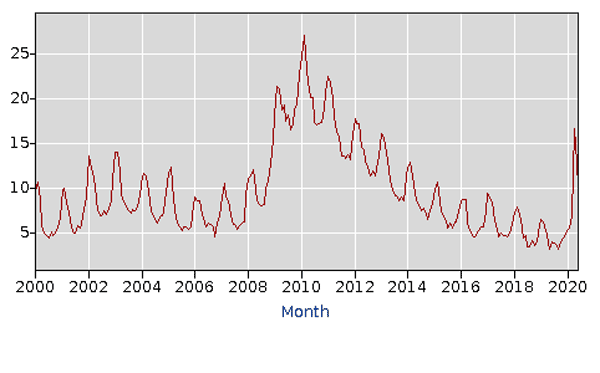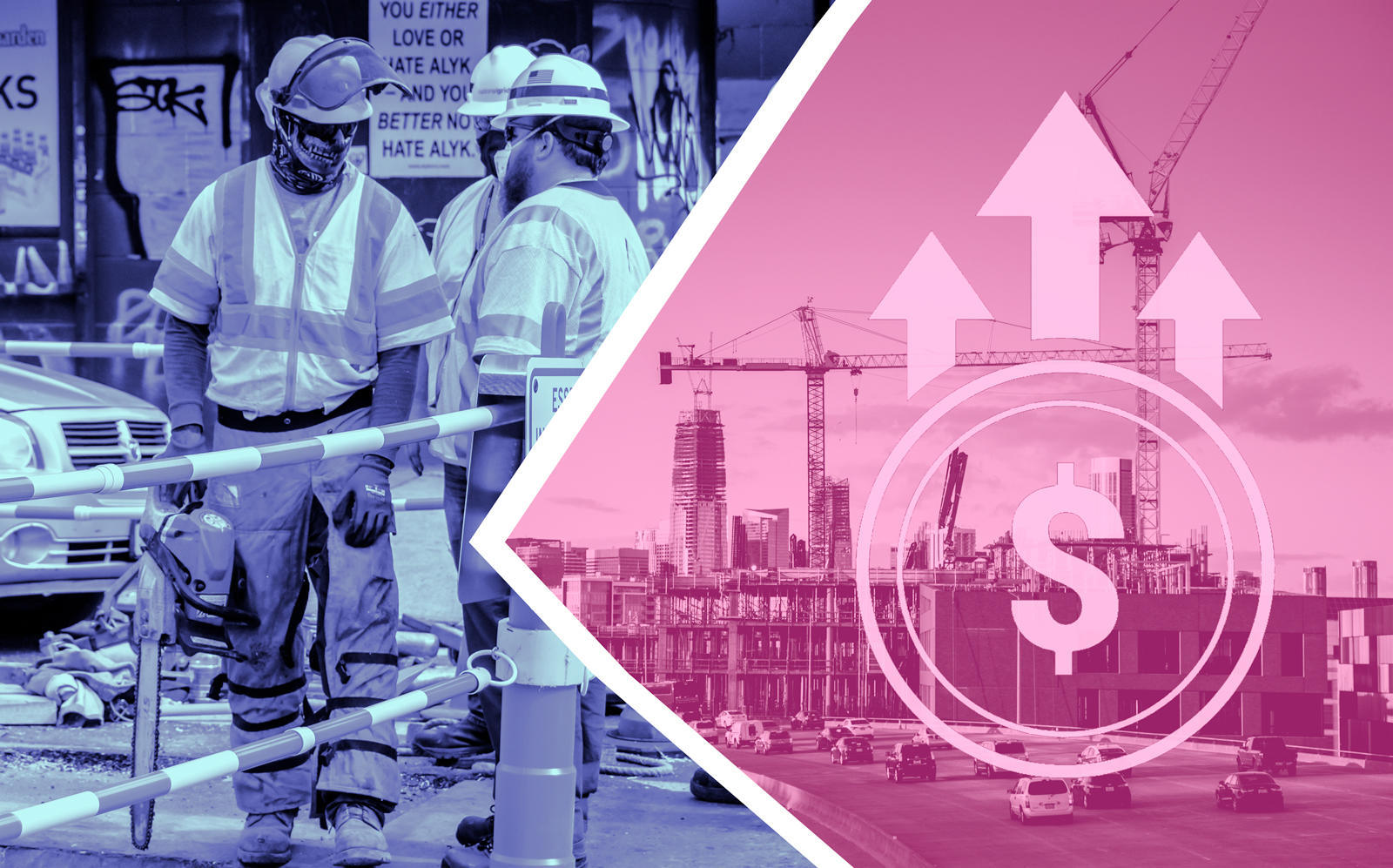The construction industry was hit hard by the pandemic, with many construction sites across the country shutting down as the coronavirus began intensifying.
The latest quarterly report from construction consultancy firm Rider Levett Bucknall shows that unemployment in the industry spiked in the early days of the crisis but then recovered somewhat, and did not reach levels seen after the 2008 financial crisis.
Meanwhile, construction costs continued to grow inexorable, albeit at a slower pace.
RLB’s research shows that construction costs have continued to grow, as its national construction cost index rose by 0.84 over the past quarter — well below the 2.2-per-quarter growth rate of the past five years.
California markets saw costs increase the most, as San Francisco — which surpassed New York last year as the most expensive city to build in — increased its lead, and Los Angeles overtook Washington D.C. to land in sixth place among the 12 cities tracked by RLB.
Unemployment in the construction sector has always been seasonal, peaking in winter and falling in the summer. But “at the onset of the coronavirus, we saw construction unemployment rise to 6.9% during March; a higher rate than expected despite the anticipated cyclical peak,” the report says. “This dramatic influx of unemployment came as a result of construction job sites shutting down and trades being furloughed or laid off until it became safe to work again.”
Construction unemployment rose further to 16.6 percent in April before falling to 12.7 in May. “We anticipate that construction unemployment will continue to decrease as job sites open back up, though we do not expect that the rate will get as low as it was, pre-pandemic.”
Data from the U.S. Bureau of Labor Statistics shows that construction sector unemployment was significantly worse in the years following the financial crisis, reaching a peak of 27.1 percent in February 2010.

(Credit: U.S. Bureau of Labor Statistics)
According to data released by the Small Business Administration in July, the construction sector was among the largest recipients of forgivable Paycheck Protection Program loans, receiving more than 470,000 loans totalling $64 billion, about 12.5 percent of all funds disbursed.
